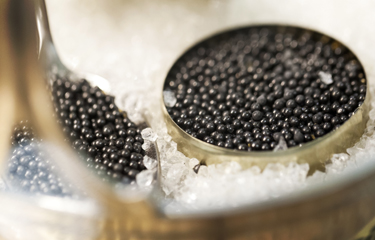Russian caviar production up 23 percent, but skeptics claim mislabeling

The first three quarters of 2019 saw a surprising spike in production of black caviar in Russia, with some members of the industry concerned the increase could be the result of mislabeled imports.
Sturgeon and starred sturgeon fishing in the Volga River and the Caspian Sea has been forbidden since 2005, meaning any black caviar sold in Russia comes either from local aquafarms or from abroad.
Between January and September 2019, Russian aquafarms produced 32.7 metric tons (MT) of black caviar, which is 23.3 percent more than during the first nine months of 2018, according to the Russian Federal Service for Statistics.
A representative of the Russian Federal Agency for Fisheries told the RBC that the spike in production can be attributed to an increased productivity of aquafarmers. German Zverev, president of the All-Russian Association of Fishing Industry (VARPE), added that many companies invested into the construction of capacities in 2015 and 2016, with approximately 80 farms now engaged in growing sturgeon in Russia.
But Alexander Novikov, the president of the Sturgeon Union, disagreed, saying production volume has rather declined, not increased this year. Novikov said the growth in the market can be attributed to an increase in black caviar imports from China and Uruguay. Unscrupulous producers import the caviar, mislabel it as Russian-produced, and then move to the market, he claimed. It’s also indicated as Russian in the national electronic veterinary certification system, though it is not.
According to the Russian Federal Customs Service, there was no increase in imports of black caviar to Russia. The total reached just 5 MT for the nine-month period stretching from January to September 2019, down from the same period in 2018, when 12.2 MT was imported. In that time, a significant change in Russia’s main sources of imported caviar took place. In 2018, 9.3 MT of black caviar was supplied from China. In 2019, China’s volume dropped to just 300 kilograms. The leading position was taken by Uruguay, with 1.8 MT of caviar imports, against only 50.7 kilograms in 2018.
Photo courtesy of Evannovostro/Shutterstock






Share